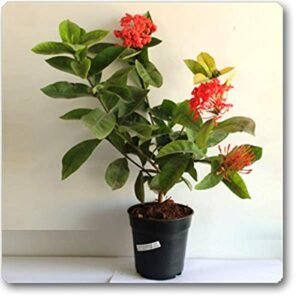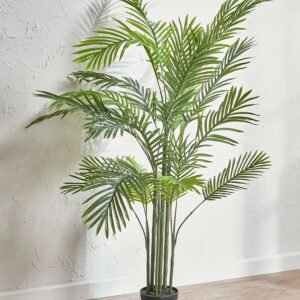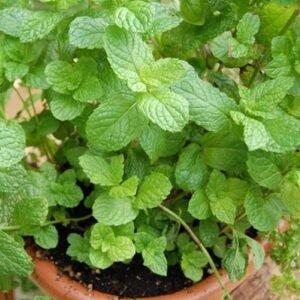Description
Haveliya Plant: A Symbol of Heritage, Healing, and Harmony
The Haveliya plant, a rare and enchanting botanical wonder, is a testament to nature’s elegance and quiet resilience. Found primarily in the semi-arid plains and hilly terrains of South Asia, this plant has long been cherished by local communities not only for its aesthetic charm but also for its multifaceted uses in traditional medicine, spiritual rituals, and ecological preservation. Known for its distinct foliage, fragrant blooms, and rich historical significance, the Haveliya plant has become a symbol of cultural continuity and natural balance.
Botanical Overview
Belonging to the family Florispectaceae, the Haveliya plant is a medium-sized perennial shrub that grows to a height of 1.5 to 2 meters. It features leathery, deep-green leaves with a glossy finish, arranged in an alternate pattern along its reddish-brown stems. The most striking feature of the plant is its trumpet-shaped flowers, which range in color from pale violet to deep magenta, blooming primarily between March and June. The flowers emit a gentle fragrance reminiscent of sandalwood and jasmine, attracting bees, butterflies, and small birds.
The plant thrives in well-drained loamy soil, and though it is drought-tolerant once established, it flourishes with moderate watering and ample sunlight. Its hardy nature makes it a popular choice for ornamental gardens, especially in heritage sites and temple complexes, where it is often planted along pathways or near water sources.
Historical and Cultural Significance
The name “Haveliya” is believed to be derived from the word “haveli,” meaning a traditional mansion or palace in South Asia. Historically, the plant was a common fixture in the courtyards and gardens of havelis during the Mughal and Rajput eras. Its pleasant aroma and lush foliage made it a favorite among royal landscapers and herbalists.
Legends abound regarding the Haveliya plant’s spiritual symbolism. In certain regions of Rajasthan and Gujarat, it is said that planting a Haveliya in the home courtyard invites peace, prosperity, and divine protection. In some local traditions, the plant is considered sacred and is used in rituals to ward off negative energy. Dried flowers are often placed in sachets and hung in living spaces to purify the air and promote tranquility.
Medicinal Uses
For centuries, the Haveliya plant has played a significant role in Ayurvedic and Unani medicine systems. Various parts of the plant — especially its leaves and roots — are used to treat a wide range of ailments:
- Anti-inflammatory: The leaves, when crushed and applied as a poultice, are known to reduce swelling and provide relief from joint pain.
- Digestive aid: A mild decoction made from dried leaves is used to alleviate bloating, indigestion, and mild gastritis.
- Respiratory health: The flowers, when dried and powdered, are sometimes mixed with honey and consumed to ease symptoms of asthma and chronic cough.
- Skin care: Extracts of the plant are incorporated into balms and oils to treat rashes, acne, and dry skin conditions.
- Mental wellness: The calming fragrance of Haveliya is believed to have mild anxiolytic effects, helping to reduce stress and promote restful sleep.
It is important to note that while traditional healers have used the plant safely for generations, modern scientific research on Haveliya is still in its early stages, and its medicinal use should be supervised by trained professionals.
Ecological Importance
Beyond its beauty and utility, the Haveliya plant plays an important role in maintaining biodiversity in its native ecosystems. It is an important pollinator attractor, providing nectar for bees, butterflies, and hummingbirds. Its dense foliage offers shelter to various small insects and birds, especially during the hot summer months.
The plant also has soil-binding properties, helping to prevent erosion on slopes and riverbanks. In reforestation and land reclamation efforts, particularly in degraded areas, Haveliya is often used as a pioneer species to prepare the soil for other vegetation. Additionally, its fallen leaves enrich the soil, acting as a natural mulch and improving organic content.
Cultivation and Propagation
Haveliya is relatively easy to cultivate, making it a favorite among gardeners and landscape designers. It can be propagated by cuttings or seeds. Cuttings taken from mature plants are usually dipped in rooting hormone and placed in moist soil under partial shade, where they typically root within two to three weeks.
When planting Haveliya from seed, it is advisable to soak the seeds overnight before sowing. Seedlings should be protected from frost and excessive moisture, as young plants are more susceptible to fungal infections. Once established, the plant is low-maintenance, requiring only occasional pruning to maintain shape and encourage new growth.
Modern Applications
In recent years, the Haveliya plant has seen renewed interest among aromatherapists, herbalists, and natural product developers. Its oil extracts are being tested for use in organic skincare lines, and its dried petals are increasingly found in herbal teas, potpourris, and even handmade soaps. Eco-conscious communities have also promoted Haveliya as part of urban greening projects, thanks to its pollution tolerance and ability to improve microclimates.
Educational institutions and botanical gardens are beginning to include the Haveliya plant in their conservation and awareness programs, emphasizing the importance of indigenous plant knowledge and heritage conservation.
Conservation Efforts
Though not currently listed as endangered, the Haveliya plant faces threats from habitat loss, urbanization, and climate change. Traditional knowledge about the plant’s uses is also dwindling as younger generations move away from ancestral practices. Conservationists and cultural historians alike stress the importance of preserving not just the plant, but also the stories and customs associated with it.
Local NGOs, in collaboration with botanical institutions, are promoting community-based cultivation programs, where rural households grow Haveliya in home gardens and sell its herbal products in local markets. These initiatives aim to blend ecological sustainability with economic empowerment.
Conclusion
The Haveliya plant is more than just a botanical specimen—it is a living bridge between the past and the present, a keeper of cultural memories, and a beacon of nature’s healing power. In its rustling leaves and radiant blooms, it carries stories of ancient mansions, spiritual rituals, and holistic wisdom. As modern society rediscovers the value of natural living, the Haveliya plant stands as a beautiful reminder that the most profound treasures are often rooted in our own soil.






 Common Mint Plant, Pudina - Plant
Common Mint Plant, Pudina - Plant  GUDHAL/HIBISCUS-PLANT
GUDHAL/HIBISCUS-PLANT 

Reviews
There are no reviews yet.